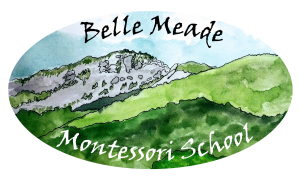Humanities/Arts
Humanities courses focus on developing research and historical analysis skills while gaining historical, cultural, and geographic fluency. Students learn to think as historians while forming and supporting their own data based opinions.
Students gain real life experience and develop independence as they engage in practical economics. Students learn economics by creating and running their own business. They learn economic terms, principles, manage inventory, design budgets and keep accurate accounts of income and expenditures. Students learn and practice working in different roles within a business.
Students learn the foundations and principles of government by studying the works of contemporary and historic political authors. The study the constitution and other founding documents as they create, revise, and maintain their own functional government and economy. Students also experiment with and apply personal and general finance, economics, and business principles as they create and run businesses, make purchases, pay taxes, and finance the government. Government and Economics II students take larger roles in the student government and economy, and engage in historical and contemporary research as well as creating real world policy evaluations and proposals.
HS: Sample Beginning of Year Government Test – Mini Economy and Government Project
Students learn the foundations and principles of government by studying the works of contemporary and historic political authors. The study the constitution and other founding documents as they create, revise, and maintain their own functional government and economy. Students also experiment with and apply personal and general finance, economics, and business principles as they create and run businesses, make purchases, pay taxes, and finance the government.
MS: Sample Midyear Government Written Discussion – Mini Economy and Government Project
American History II expands on the foundation laid in American History I. Students delve deeper into research and analysis as they study key events in the history of the Western Hemisphere. They learn to evaluate other historians research, peruse original documents, and prepare to draw and defend their own conclusions about American History and the American Experience.
American History I introduces students to key events in the history of the western hemisphere with emphasis on the development of the United States. Students begin to develop formal academic research and writing skills as they study original documents and secondary sources and create their own analyses.
All students participate in drama lessons which include improvisation, drama games, and exercises. Students produce and act in a Broadway quality musical one year and a student written production in alternating years. Past productions include: Grease, Footloose, Skitastrophy Extravaganza, The Addam’s Family, and Oklahoma.
Using traditional techniques and emerging technologies, this class emphasizes exploration, analysis, and investigation of the creative process. Students develop technical skills that empower them to communicate ideas visually, developing an understanding of and appreciation for the visual arts. Students explore various two-dimensional and three-dimensional art media, using different expressive and technical approaches. Students study the factors that distinguish artistic styles and that clarify the role of art in culture.
In World History II students will engage in a study of the political, cultural, social, and economic conditions from 1500 to present. Students hone their research skills and discuss how the past shapes the world we live in today.
Sample Midyear World II History Essay Test with Student Answers
World History I course covers human history up to 1500 CE. Students will research and learn about human development and ancient cultures from around the globe, broadening their understanding of contemporary culture as they compare and contrast with earlier ones.
World Geography class teaches students how to use maps, globes, atlases, satellite images, photographs, graphs, and other geographic tools to study and understand the world’s populations, national identities and geographic environments. Students will look to history for understanding of how geological factors affect civilizations and cultures and economic, political, and social development. By the end of the class students will be able to identify all the continents, oceans, many islands and nations, and understand that the world’s population is a single community divided by geographic location.
